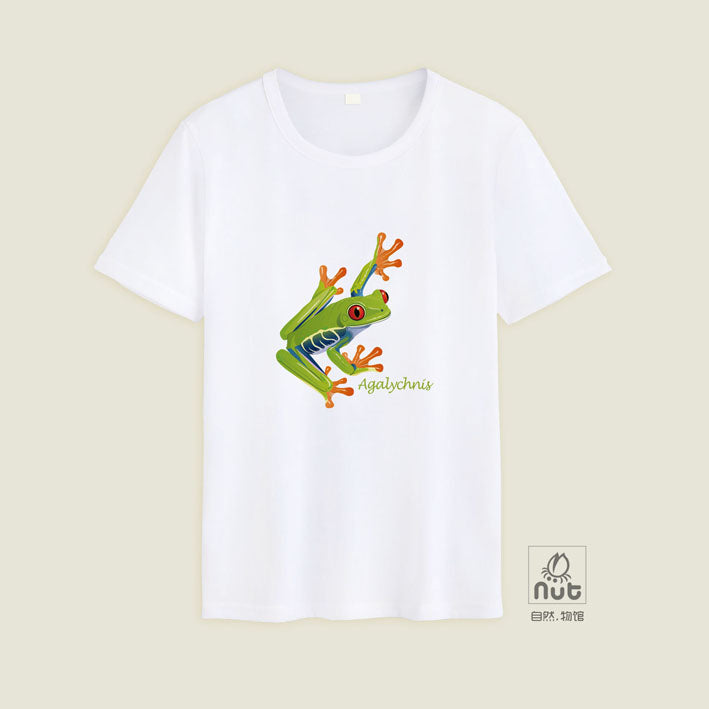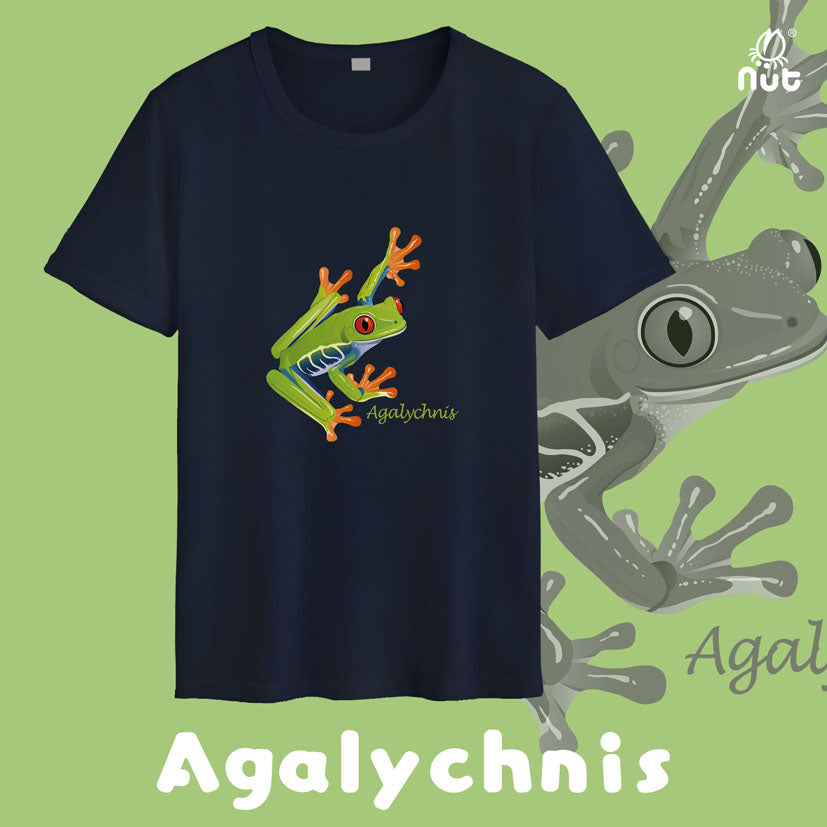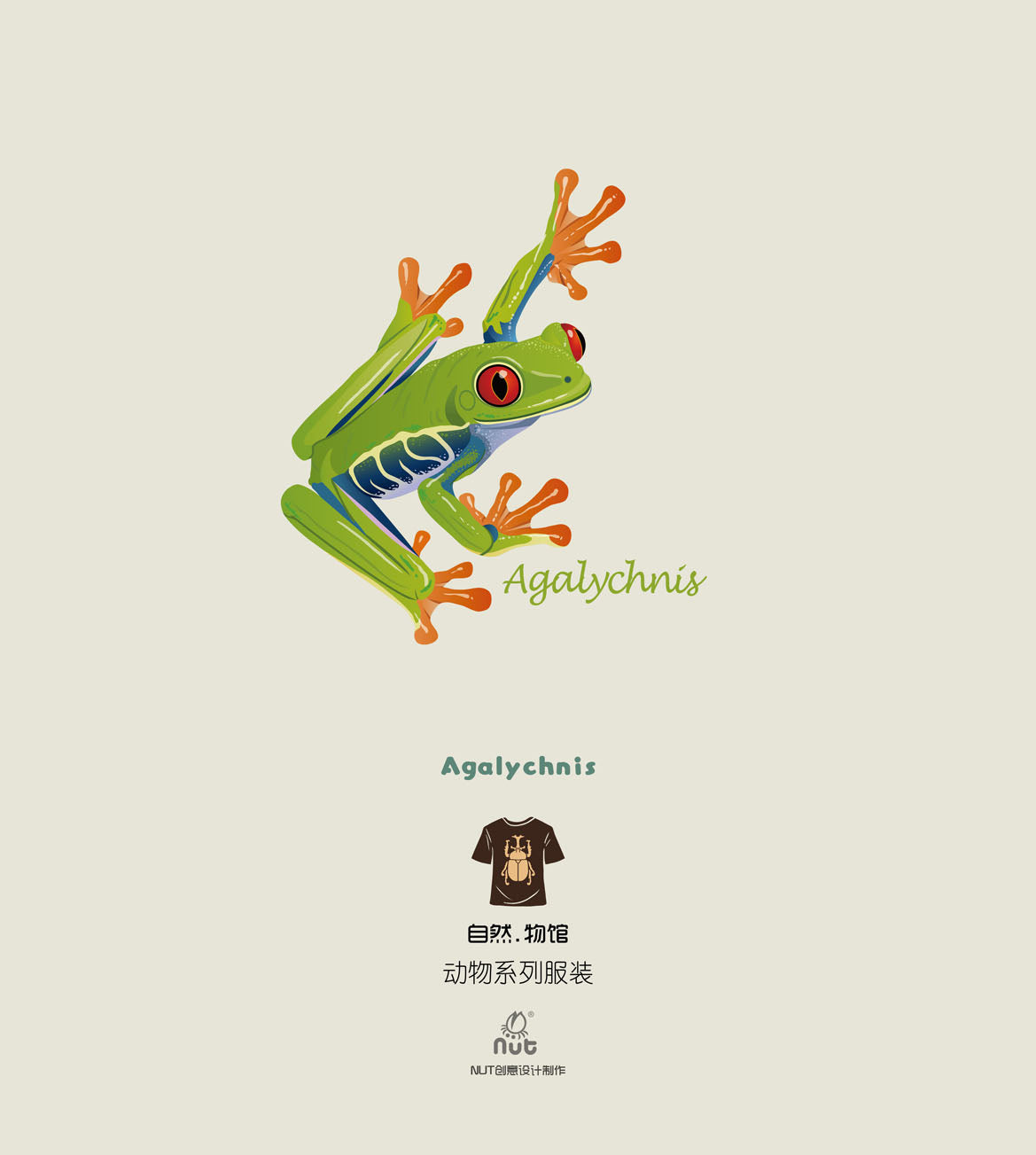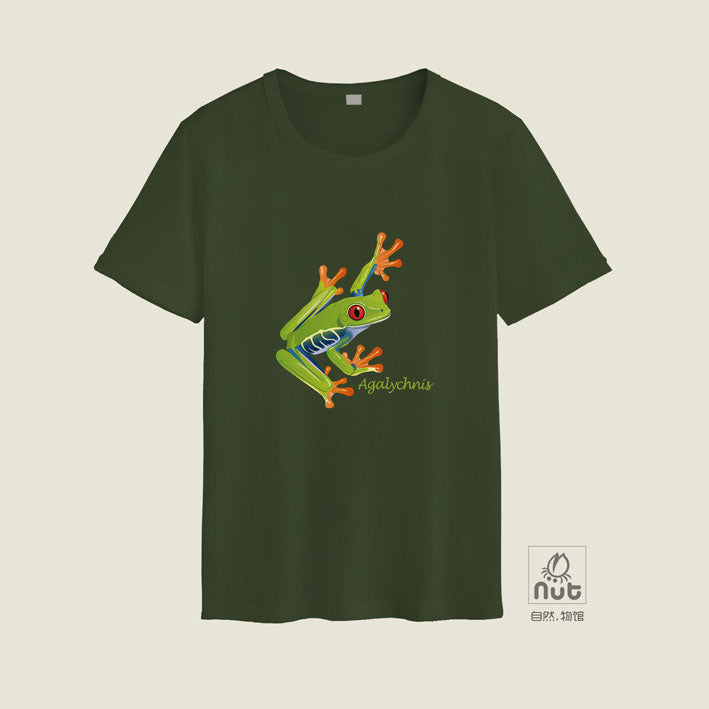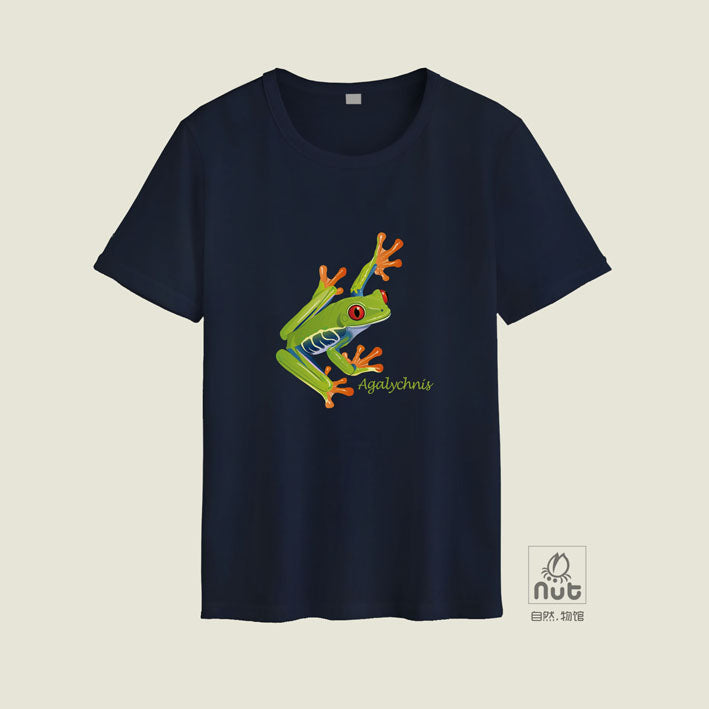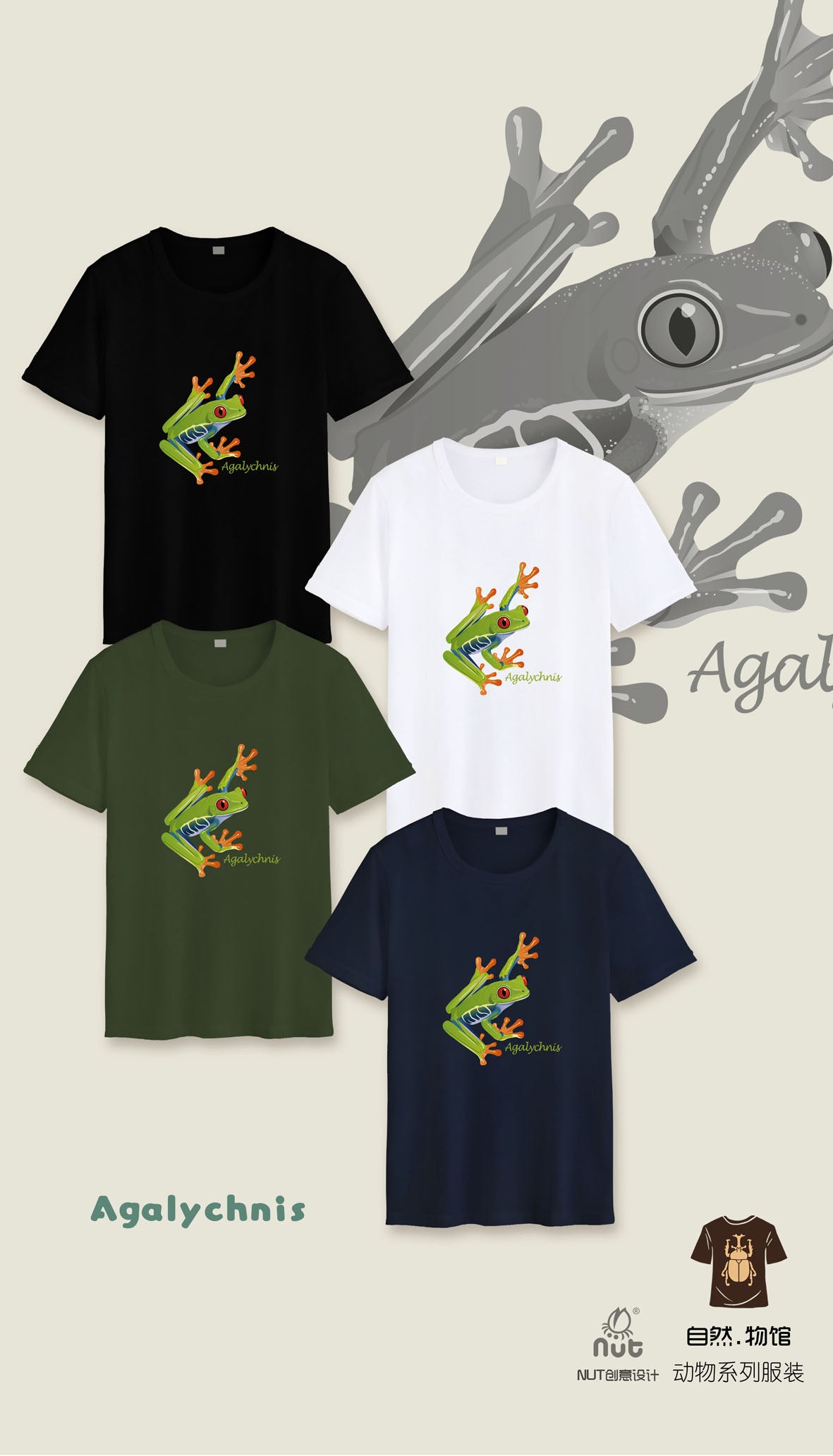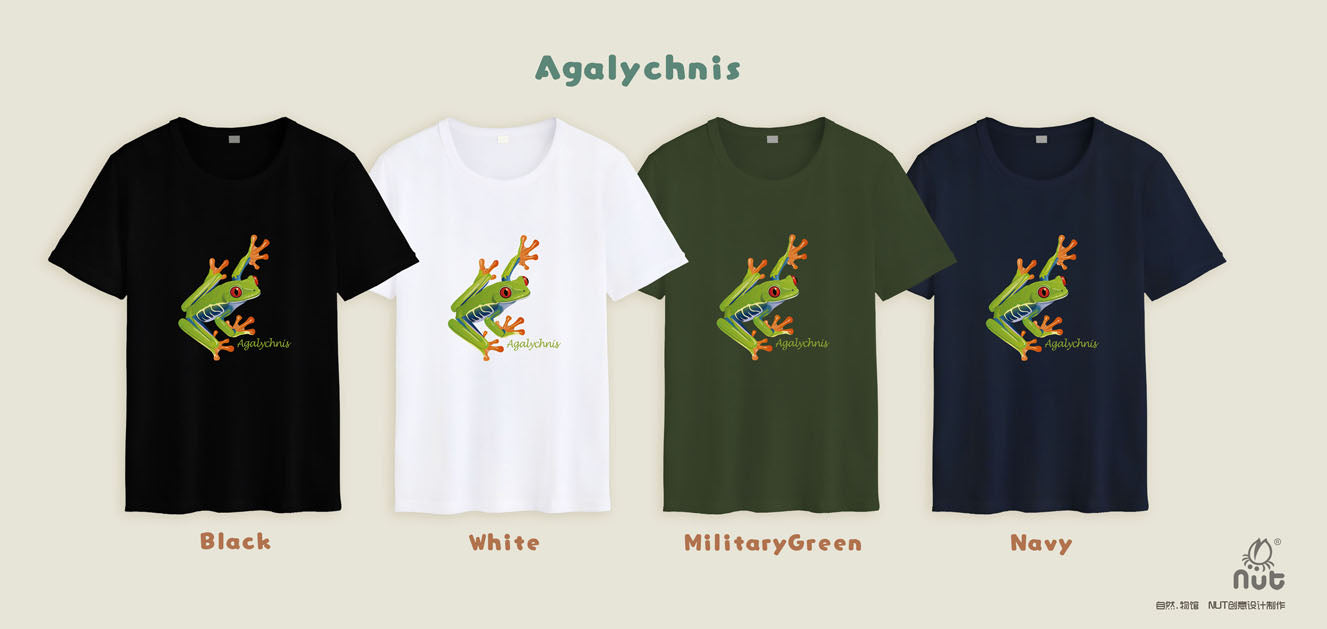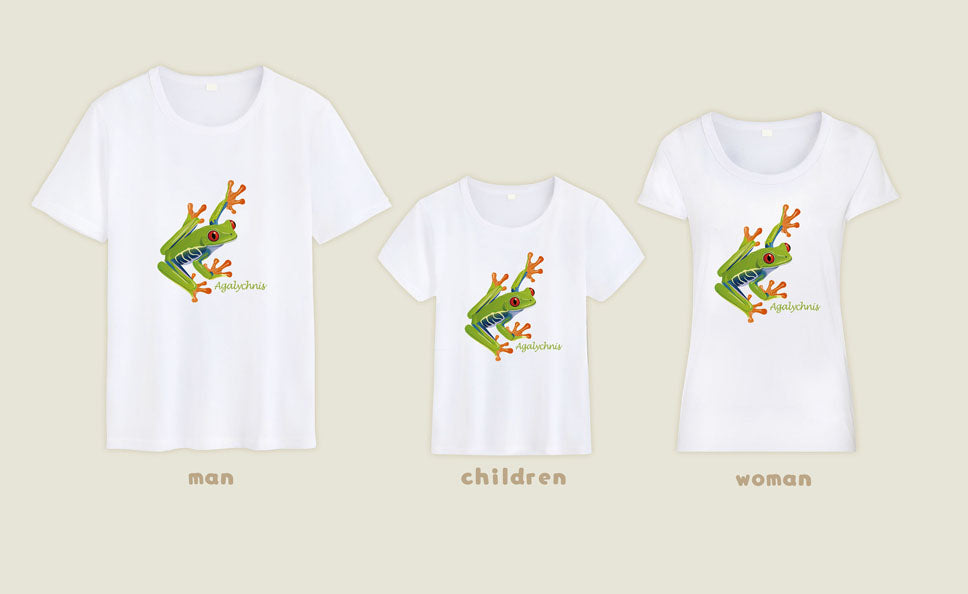Nut Insect Nature Design
T-shirt Agalychnis
T-shirt Agalychnis
Prix habituel
$39.80 USD
Prix habituel
Prix soldé
$39.80 USD
Prix unitaire
par
Frais d'expédition calculés à l'étape de paiement.
Impossible de charger la disponibilité du service de retrait
Agalychnis is a small frog with a body length of only 5-6 centimeters. Their bodies are mainly gray or brown, with alternating stripes. The most prominent feature is a ring of bright red spots around their pupils, which is very beautiful. Agalychnis mainly lives in the Amazon rainforest region of South America. During the day, he usually hides under leaves or in tree holes, and at night he becomes active in search of food. They feed on insects, spiders, and other small invertebrates.

The habitat of Agalychnis is typically a jungle zone close to water sources, such as swamps, streams, and ponds. They are mainly distributed in South American countries such as Brazil, Peru, Colombia, and Suriname. Agalychnis is a nocturnal animal that usually hides in tree holes or at the bottom of leaves to rest during the day. At night, they become active in search of food and lay eggs on plants to reproduce.

Due to habitat destruction and the impact of human activities, Agalychnis is facing an endangered threat. To protect this rare animal, many organizations and institutions have begun to take action to conduct conservation research to ensure its survival and reproduction.

Want to know more?
https://www.nationalgeographic.com/animals/amphibians/r/red-eyed-tree-frog/

The habitat of Agalychnis is typically a jungle zone close to water sources, such as swamps, streams, and ponds. They are mainly distributed in South American countries such as Brazil, Peru, Colombia, and Suriname. Agalychnis is a nocturnal animal that usually hides in tree holes or at the bottom of leaves to rest during the day. At night, they become active in search of food and lay eggs on plants to reproduce.

Due to habitat destruction and the impact of human activities, Agalychnis is facing an endangered threat. To protect this rare animal, many organizations and institutions have begun to take action to conduct conservation research to ensure its survival and reproduction.

Want to know more?
https://www.nationalgeographic.com/animals/amphibians/r/red-eyed-tree-frog/
